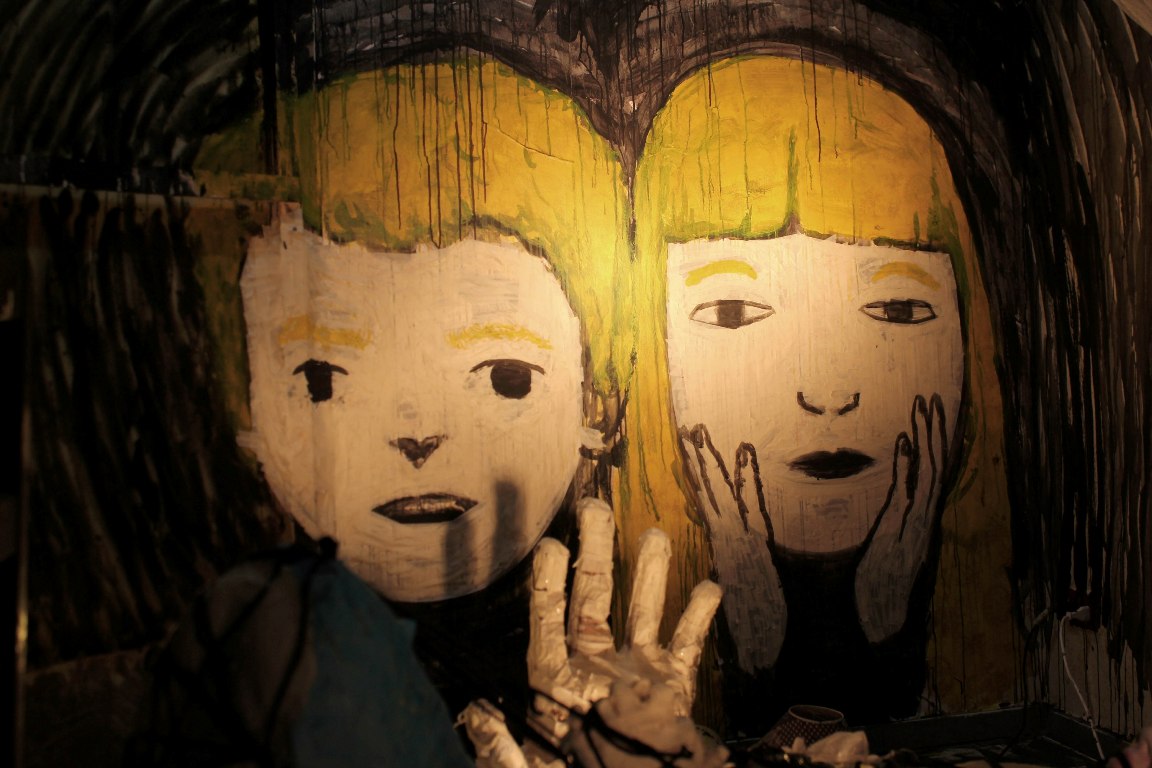Anifilm always has strong programming so I was especially happy to be invited for this year’s edition as the theme was animated documentaries
Anifilm always has strong programing so I was especially happy to be invited for this year’s edition as the theme was animated documentaries. Anidocs, the melding of animation and documentaries, is one of my favorite cinema forms.
Anidocs were born in 1918 when Winsor McCay used the medium to recreate the sinking of the Lusitania on film. It has become a powerful way to tell true stories that could not be told in live action. It is the perfect medium for dealing with serious subjects such as war experiences, violence and abuse, disabilities or social or political injustice. In some cases the subject is not willing or able to appear on camera but willing to have their voice recorded.
For the festival there were three international short Anidoc programs, five feature films, and two Czech Anidoc programs. They were curated by Annegret Richter, German curator and longtime programmer of the Anidoc Festival in Leipzig. She also included one program of short animated mockumentaries or fake Anidocs.
In the Close Up and Personal program, Annegret selected seven films that revealed the personal side of each animator. Double Up by British animator Samantha Moore tells of the shock and awe she felt when she learned that she was expecting twins. John Canemaker enters into an imaginary conversation with his father in The Moon and the Son: An Imagined Conversation. In Ryan, Chris Landreth delves into the life of Canadian animator Ryan Larkin via an animated conversation. Larkin went from being nominated for an Oscar for his film Walking to panhandling on the streets of Montreal.
People Are People spotlighted how people deal with difficult circumstances or situations. Tim Webb’s 1992 film A is For Autism was commissioned by BBC’s Channel 4 to provide insight into the lives and experiences of people who suffer from Autism. The film was based upon contributions and collaborations with autistic people of all ages and every design in the film originated from a drawing by a person with autism.
Jonas Odell is known for his anidocs as well as music videos. In Never Like the First Time, the Swedish animator delves into the first sexual encounter of four different people ranging from a rape victim to a man who, after many years, is still happily married to his first sexual partner. The film is one of my favorite anidocs; even though I have seen the film many times I still enjoy watching it.
The final program of international short Anidoc’s, History Repeating, dealt with memory, important social and political topics and explored how filmmakers get to grips with their own or someone else’s history. It was only fitting that the program began with Winsor McCay’s The Sinking of the Lusitania and ended with French Canadian Marie-Josee Saint-Pierre’s 2006 McLaren’s Negatives. The film is a study of Canadian animator Norman McLaren and his personal view of film making. McLaren was an important historical figure in the history of the animated documentary. In 1953 McLaren won the Best Short Documentary Oscar for Neighbors. His 1939 film Love on the Wing was shown in the People Are People program. The film was made for the British General Post Office as an animated advertisement.
Anidocs showed up in the history of Czech animation as early as the period between the world wars. In 1936 Irena Dodalova and husband Karel Dodal made The Adventures of a Ubiquitous Fellow which is an animated explanation of the principals of radio broadcasting. In the film the Ubiquitous Fellow travels through space until he is attracted to Earth by radio waves. On Earth, he meets the Queen of Radio Waves who explains the principals of radio broadcasting and the distribution of radio waves to him.
The first program of Czech anidocs consisted of films by students at the Tomas Bata University in Zlin. They were given an assignment to visually portray speeches of personalities in the fields of philosophy and art. The second program showcased works by students of the Department of Animation of the Academy of Performing Arts in Prague.
The Animated Mockumentary – Fake Anidoc selection was pure fun. Russian director Yulya Aronova’s My Mum is an Airplane tells the story of mothers from a young boy’s point of view. He knows that other people’s moms are good, but his is the best because she is an airplane and can fly to all sorts of exotic places.
What do museum guards do when no one is around to see them? Austrian animator Alexander Gratzer gives us the answer to this question in his 2016 three minute film Museum Guard. British animator Andrew Gordon gave us a glimpse into what it is like to be a loaf of bread. This extremely funny two-minute film is about a conversation between two loaves of bread on the conveyer belt of a supermarket checkout counter.
I had already seen many of the films in the International Competition. After a second viewing of Sister the film stood out to me. Director Siqi Song from China and the United States set her film in 1990’s China where a man remembers his childhood and his annoying younger sister. Or was she really there? The eight-minute film is a touchingly poignant reminder of the Chinese one-child policy.
I was impressed with Siqi Song’s felt puppets. Ever since Oh Willy was a big hit I have seen other filmmakers using felt puppets that look exactly like Willy to varying degrees of success, or more accurately, lack of success. In Sister Siqi Song has created felt puppets that have their own character and identity.
Folimage consistently turns out films that entertain me and The Cat’s Regrets is no exception. Alain Gagnol and Jean-Loup Felicioli deal with family dynamics in a story about a ten-year-old boy who hates his younger brother. As punishment for his abuse of his brother, the boy is forced by his mother to spend the afternoon with a reclusive old man. When the boy uncovers the old man’s terrible secret, the boy learns a lesson about life. The two main characters, the old man and the boy, were drawn in a style that gave me a creepy feeling just to look at them and the background art fit the dark nature of the film.
Anifilm has a separate category for abstract and non-narrative films with its own jury. I think this is an excellent idea because abstract and non-narrative animation often gets lost when put into the international competition. The winning filmmaker in this category was Caibei Cai from the United Kingdom. Her five-minute film Half Asleep was Caibei’s graduation film from the Royal Academy of Art. In it she presents a silent relationship between two half bodies in a room. The film gives off a mysterious atmosphere with the themes of anxiety, pleasure, struggle and endurance subtly presented in a mesmerizing manner.
A Special Mention in the abstract and non-narrative category went to Austrian animator Thomas Renoldner for Don’t Know What. The film combines what Thomas calls “entertainment cinema” (ie commercial cinema) and avant-garde film/video art. Using single-frame editing, this realistic film transforms into a slap-stick like comedy with serious intent. The audience is purposely left to weave their own way between seriousness and humor.
The Wolf House is a cross between a fairy tale and a nightmare loosely based on Little Red Riding Hood. Chilean directors Cristobal Leon and Joaquin Cocina begin their seventy-five minute feature film with an actual short publicity film for the Dignity Colony. The isolated colony in Southern Chile was founded by former German Nazi Corporal Paul Schaefer in 1961. Schaefer had fled Germany following accusations of child abuse, where, with many of his followers, he founded the bizarre sect. Initially with the ignorance of the Chilean government and then with the complicity of the Pinochet regime, children were separated from their parents at birth, men and women were often drugged, and Schaefer sexually abused the children. The colony also served as a haven for such Nazi fugitives as Joseph Mengele and Walter Rauff.
In The Wolf House, a young girl, Maria, is severely punished for losing three pigs that she is told to watch. She escapes from the Dignity Colony into the woods where she finds a strange house inhabited by two pigs. Then things get very strange as the pigs sprout hands and feet and people dissolve into streaks of paint. Bodies begin to undergo startling transformations as the papier-mâché they are made from begin to unravel.
The directors used every animation technique imaginable with large scale paintings, human sized puppets, and objects that move between dimensions as 2D interacts with 3D and vice versa. The film is composed as if it were one long take as in Hitchcock’s Rope. Maria is coming to terms with the reality of her childhood abuse at the colony while the wolf that has followed her through the woods is constantly peering at her through the window calling Ma-ri-a in a soothing, reassuring voice. The award for the best feature film at the festival went to The Wolf House.
This disturbing piece of Chilean history takes all of your attention and concentration to watch. The film needs at least two viewings to catch the details but the time and effort that you put into the movie are well worth it.
Each year Anifilm pays tribute to an individual who has made a great contribution to the world of animation. This year the award was presented to Zdenka Deitchova at the opening night ceremony. Zdenka began her long career in 1945 at the Bratri v Triku Studio working her way up from redrawing the drawings on cels to becoming a noted producer. Her first independent production was Why UNESCO? By Jiri Trinka in 1958.
Zdenka went on to play an important role in the 1960 Czech-American animated short Munro which won an Oscar in 1961. Directed by her future husband Gene Deitch and written by Jules Feiffer, the story is about a four-year-old boy who is drafted into the U.S. Army by mistake. It was the first short animated film created outside of the United States to win an Academy Award.
Along with a long roster of films, Zdenka also produced several television series that have become classics not just in the Czech Republic but throughout Europe. Among them is my favorite, The Little Mole. Created by Czech animator Zdenek Miler, the first Little Mole adventure premiered at the 1957 Venice Film Festival where it was awarded two Golden Lions. The adventurous Little Mole continues to entertain new generations of children because the episodes do not look dated and are still charming. There were two programs of short films that she had worked on. Zdenka also personally selected films from eight children’s series that she worked on for a special screening for young people.
As part of the tribute to this amazing woman who has made such vast contributions to Czech animation, there was a showing of the fifty-four-minute film For The Love Of Prague. The film is based on a book of the same name by Gene Deitch, Zdenka's husband for over 50 years. Coming to what was then Czechoslovakia (which was a communist country at that time) from the United States at the end of the 1950s, Gene had only intended to stay a short time to work on one film project at the studio where Zdenka worked. She was and still is the reason Gene has stayed in Czechoslovakia. The heartwarming film is the story of the trials and tribulations of their romance and attempts to marry. For The Love Of Prague gives a very personal glimpse into a beautiful love story as told by both of them.
Created in 2016 to give Czech animation its own platform, the Czech Horizon National Competition has its own separate jury. Three programs spotlighted short Czech animation. Other categories included television and on-line films and series, Music Videos and Commissioned Works.
Midnight Animation has become a tradition at the festival. The three screenings were divided into From Bohemia with films that were black, absurd, and totally quirky. Blood, as the title implies, was full of horror films of every genre. Body focused on horrifying aspects of the body and flesh. These programs were the perfect way to end a night in Bohemia.
If you think that the films in Midnight Animation were festival rejects made by animators no one will ever hear of again you are wrong. The list of filmmakers includes such well-known directors as Ben Mitchell from the United Kingdom, Pencho Kunchev of Bulgaria, and Dutch animator Paul Driessen, all of whom have made at least one film to raise the hairs on the back of your neck.
This year there were two excellent exhibitions. To celebrate the thirtieth birthday of post-revolutionary Czech animation, Ales South Bohemian Gallery in conjunction with the festival mounted an exhibition of the last three decades of Czech animation. After the 1989 revolution, a new era began in Czech cinema and animation went through some difficult times with the changes in the production and distribution systems. The exhibition celebrated the successes of the last thirty years of animation in feature films, television series, shorts, and student films.
I was quite intrigued by the Reinhold Bidner and gold extra exhibition. Reinhold is a Salzburg graphic artist and animator whose focus is on combining animation and electronic media. He works solo as well as a member of the art collective gold extra, an Austrian arts collective which celebrated its twentieth anniversary this year.
At the Chateau Gallery, Reinhold presented four of his videos: Ex-Terrat, CONfusions, Until We Coleidescape, and Impulse. I especially liked Ex-Terrat. This experimental animation is based on Reinhold’s urban explorations of Paris. The idea for the piece was inspired by the feeling of beauty the city gave him, but also by its terrifying dark underside side. He focused on faces in the city that were on the darker side of the city of lights, collaging the faces and then animating them using different techniques.
Reinhold is also interested in exploring documentary storytelling in different mediums. To this end, he created The Fallen, a computer game exploring the war in Eastern Ukraine. The game gave me a very unsettling feeling. You are being shot at by snipers and the object is for you to kill them before they kill you. Just a bit too close to real life for me.
The Festival Tent and the Castle Park were the sights of several special live puppet presentations for children from three years old all the way up to big kids like me. I especially enjoyed Vitezslav Marcik’s one-man theatre presentation of The Little Prince. Using an old pram with puppets and music he told the story of his encounter with the Little Prince.
There were special screenings of short films and features especially for young people as well as animation workshops. In the evening the large open-air screen in Masaryk Square showed free films for the entire family ranging from Hotel Transylvania 3 to Spiderman: Into the Void.
The festival tent set in the beautiful Castle Park was the scene of daily director’s chats. In the evenings the tent turned into the spot to be for partying with live music, a bar, and room to dance. ANIMARKT is an industry networking event within the festival. For one day professionals and students of animation, VFX, game development, and VR/AR have a chance to meet, present the latest industry trends, and offer job opportunities. As part of the event, Animarket One 2 One organized one on one meetings for filmmakers and authors to meet with producers and studios.
Trebon is a lovely setting for an animation festival. Located in South Bohemia it is nestled in the Trebonska Protected Region which has been designated a UNESCO Bioaphere Reserve. The twelfth century town is noted for the Regent Brewery which was founded in 1379. There are also numerous spas in the area. The festival even screens films at a cinema located at one of the spas.
Another of Trebon’s unique features are the carp ponds which supplies carp too much of Europe. The man-made ponds are actually the size of lakes. One day the festival took its guests on a boat ride around one of the beautiful large ponds complete with champagne.
Usually, hotel rooms look pretty much the same to me, but not in Trebon. The festival put me up at Romantick Design Hotel. My room had a giant purple freesia painted on one wall and purple flocked wallpaper on the opposite wall. There was a purple shag carpet and lots of candles with purple tulle around the candle holders. There were even Harlequin Romances on the bookshelf. Each room in the hotel had a distinct color scheme based upon a particular flower. The hotel also had a spa or as they called it the Relax Zone. I would go back to the festival just to stay at that hotel again. I thoroughly enjoyed the unique experience of being in a creative hotel room.
A big thank you goes to Tomas Rychecky, Festival director and Program Director Pavel Horaćek for inviting me to be part of ANIFILM. A special thank you to the Guest Service Office which arranged my travel, stay, and were always so helpful answering my questions. Another thank you goes to all of the volunteers who were so cheerful and helpful.
If you love excellent film programs set in a beautiful atmosphere I highly recommend a trip to ANIFILM. The 2020 edition of the festival will be held from 7 to 12 of May. You can learn more about the festival at: www.anifilm.cz
The CEE Animation Forum was held concurrent to the ANIFILM Festival. CEE is a leading pitching event for animated film in Central and Eastern Europe. I divided my time between CEE and the festival so my next article will be about my adventures at CEE.
Festival Winners
International Competition of Animated Feature Films for Grown-ups
Jury members: Anca Damian, Ron Dyens, Anna Vášová
The Wolf House
(La casa lobo)
dir. Cristóbal León, Joaquín Cociña
Chile, 2018, 75 min
Technique: stop-motion, loutka, mix technik
Producer: Diluvio, Globo Rojo
Jury statement:
While entering the dark side of our subconscious, facing our hidden fears, the filmfinds a unique, daring and outstanding animation style to convey it.
Special Mention of Jury
Ville Neuve
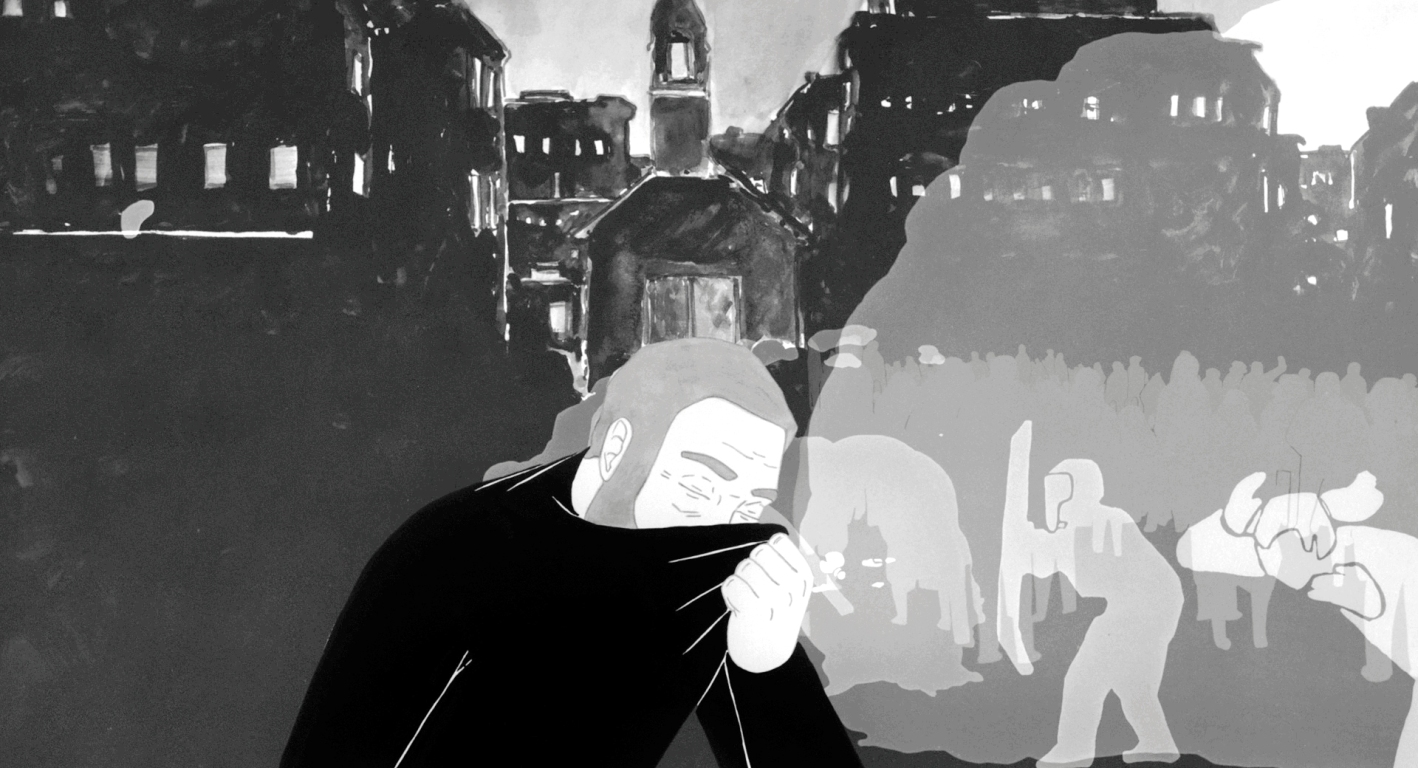
dir. Félix Dufour-Laperrière
Canada, 2018, 76 min
Technique: stop-motion, loutka, mix technik
Producer: Diluvio, Globo Rojo
Jury statement:
Working with black and white but also with a personal feeling of intimacy, the film succeeds to convey the solitude of an individual while trying to identify with a group.
International Competition of Animated Feature Films for Children
Jury members: Anca Damian, Ron Dyens, Anna Vášová
Mirai
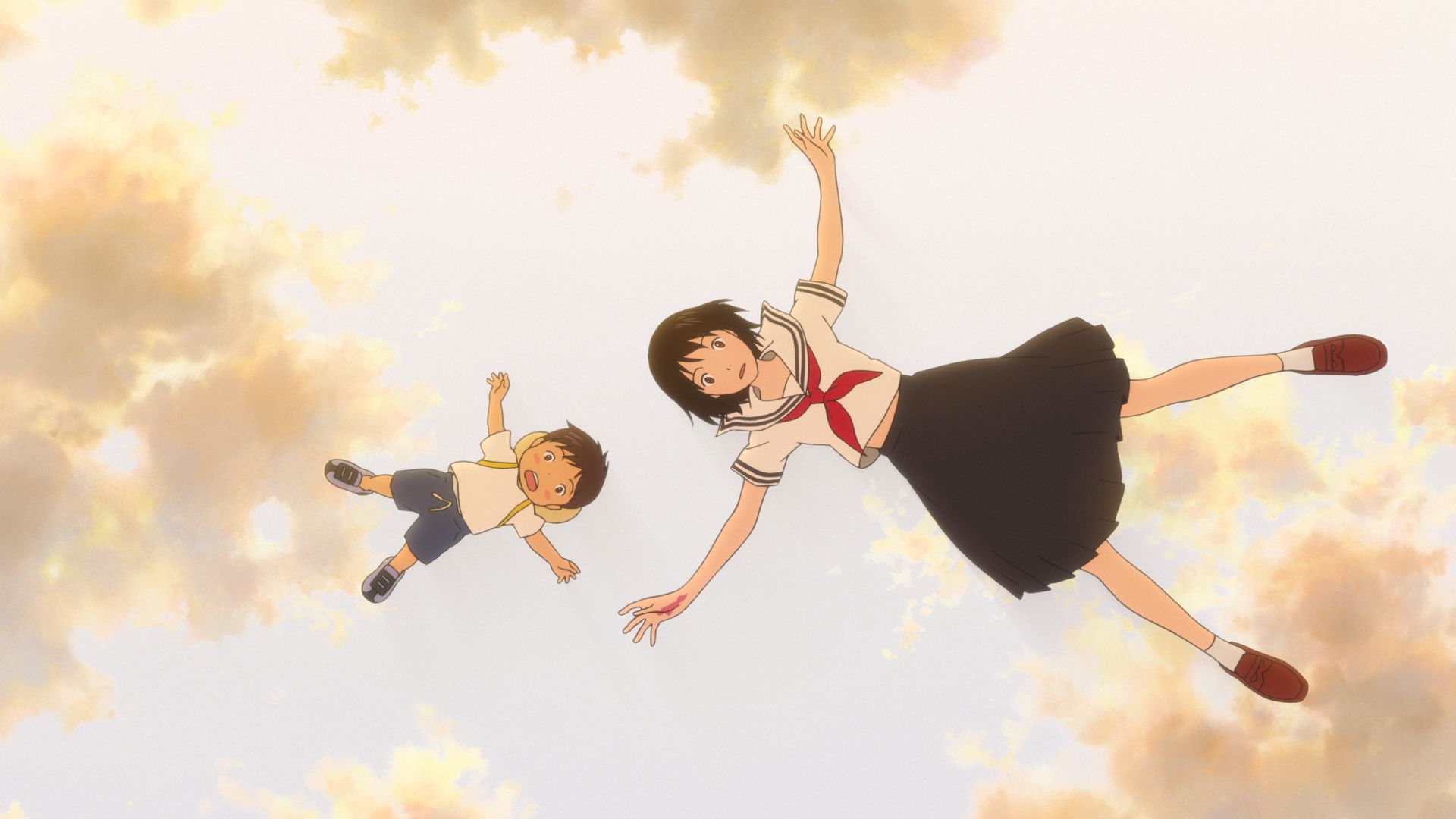
dir. Mamoru Hosoda
Japan, 2018, 98 min
Technique: 2D
Producer: Studio Chizu
Jury statement:
Main Prize goes to Mirai for succeeding to explore a common moment in the life of a family,a magical space where the generations meet, giving the vision of the eternalcontinuity of existence with a delicate and painterly animation style.
Special Mention of Jury
Pachamama
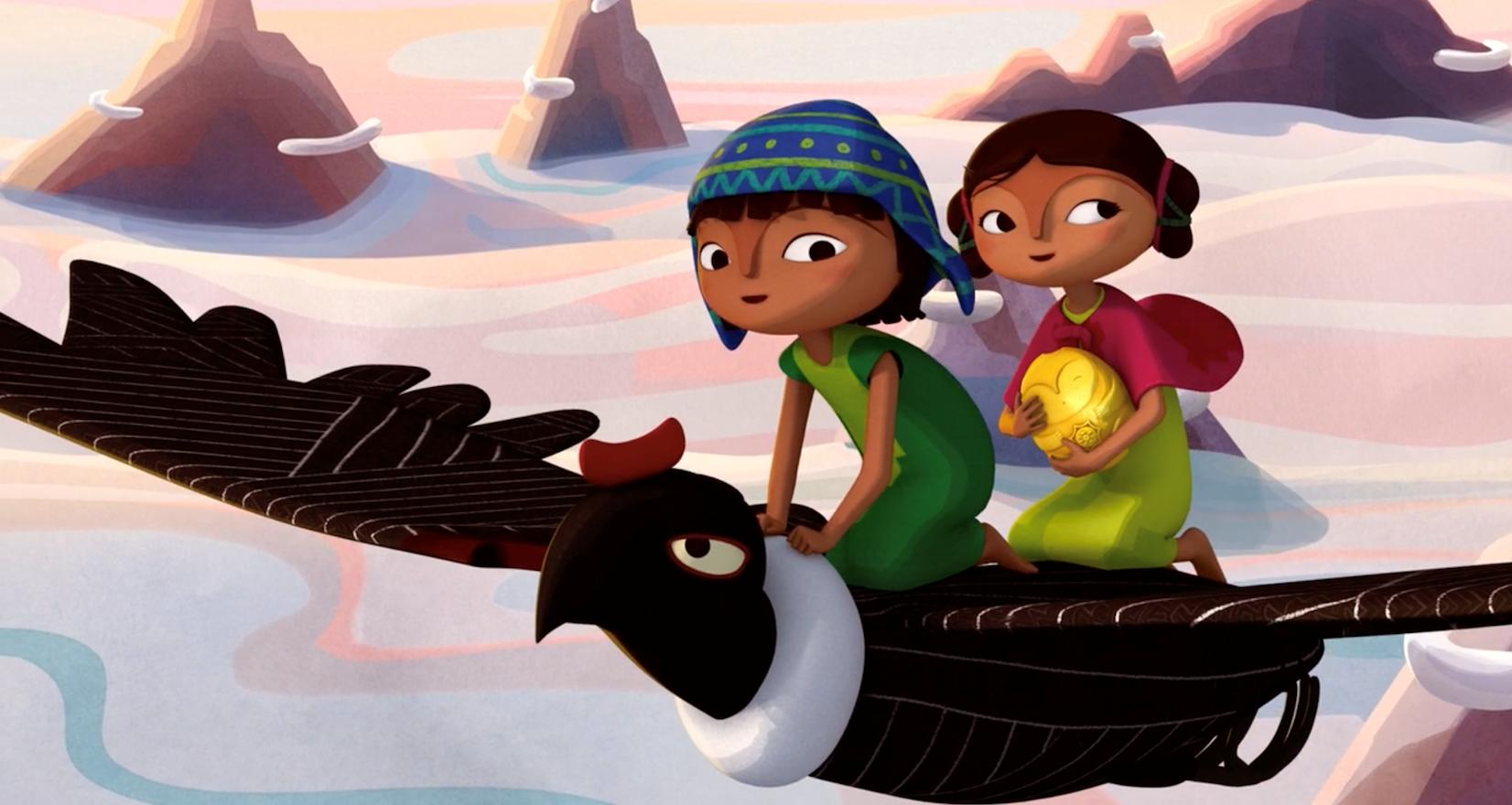
dir: Juan Antín
France, Luxembourg, Canada, 2018, 72 min
Technique: 3D
Producer: Folivari, O2B Films, Doghouse Films, Blue Spirit Studio, Kaïbou Productions, Haut et Court
Jury statement:
Special mention goes to Pachamama for telling a tale of connection with the Spirit ofMother Nature, in a poetical, touching and accessible way, with an original andpurified art design and animation.
International Competition of Short Films
Jury: Georges Schwizgebel, Jonas Odell, Kateřina Karhánková
Animal Behaviour
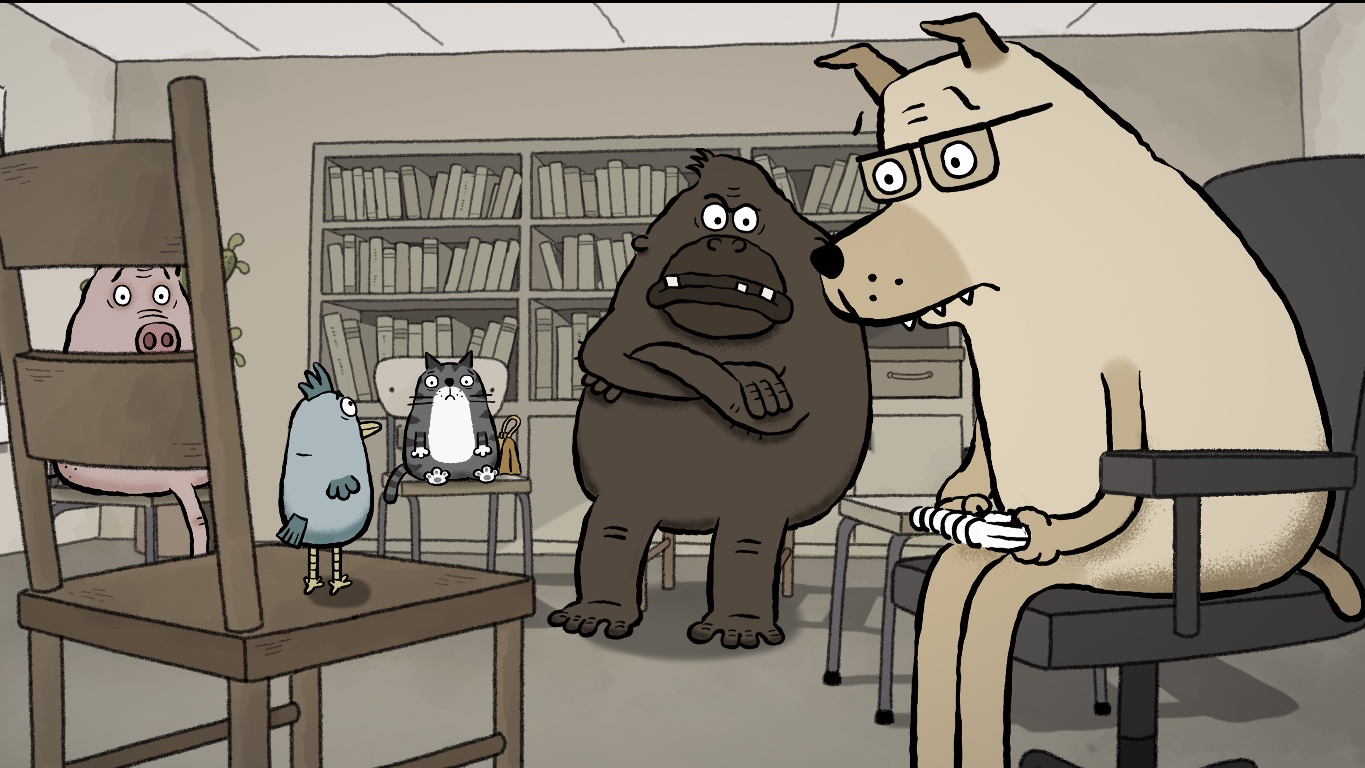
dir: Alison Snowden, David Fine
Kanada, 2018, 14 min
Technique: 2D
Producer: NFB of Canada
Jury statement:
Near perfection! The script, the timing and the acting all come together to create thisat the same time funny and emotional treasure of a film.
Special Mention of Jury
Egg
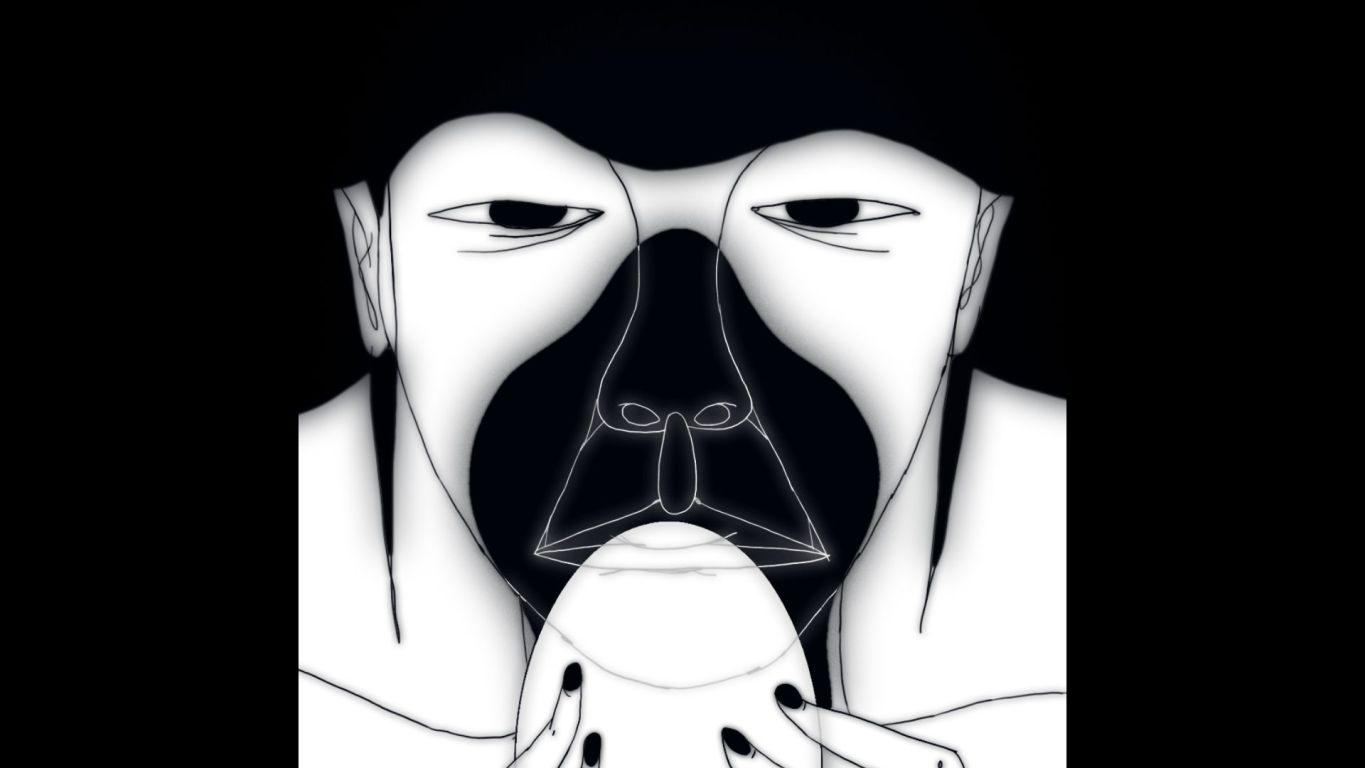
dir: Martina Scarpelli
Italy, Denmark, 2018, 12 min 7 sec
Technique: 2D and 3D
Producer: Miyu Productions
Jury statement:
Deep and powerful, this film conveys strong emotions and gives us an understandingof a difficult subject through minimalist means.
International Competition of Student Films
Jury: Georges Schwizgebel, Jonas Odell, Kateřina Karhánková
Good Intentions
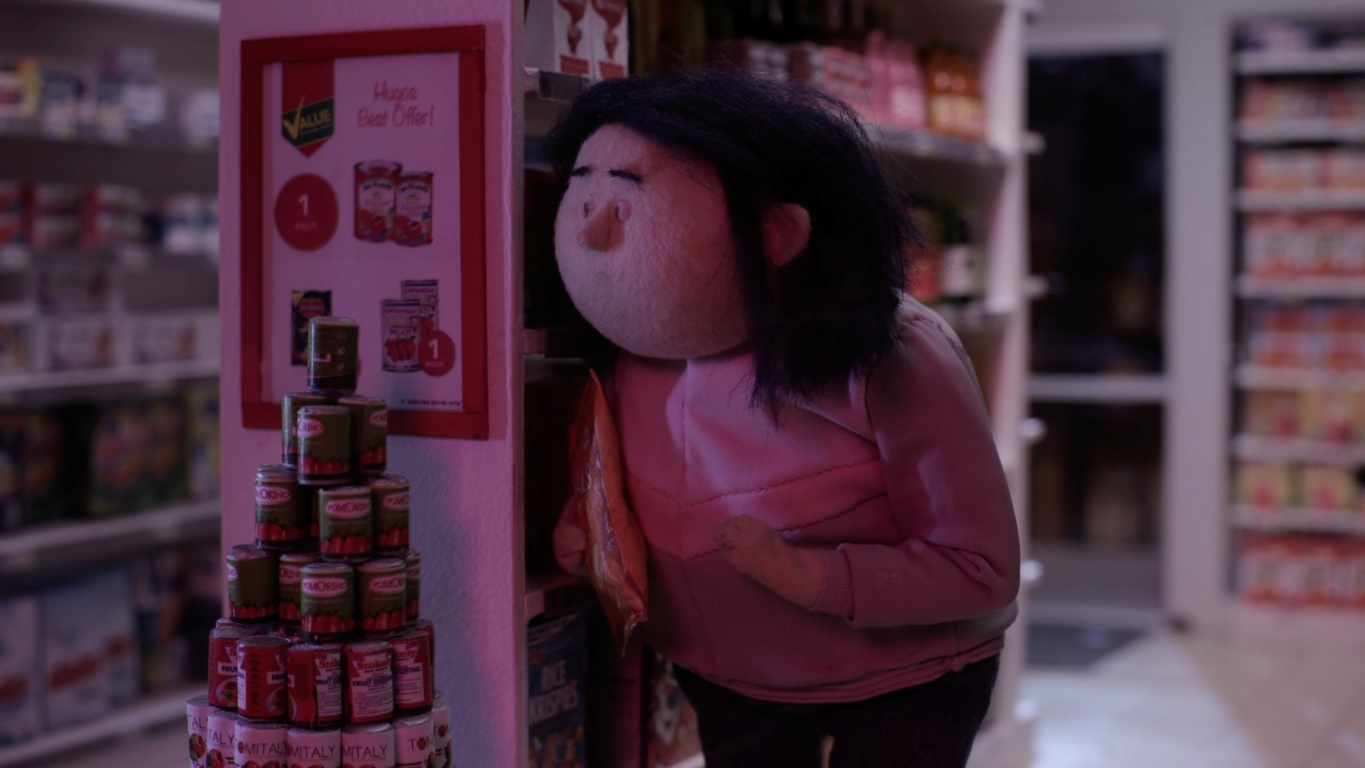
dir: Anna Mantzaris
GB, 2018, 8 min 35 sec
Technique: stop-motion
School: Royal College of Art
Jury statement:
Strong acting, timing and storytelling captivates the viewer from the first moment.
Special Mention of Jury
Apart
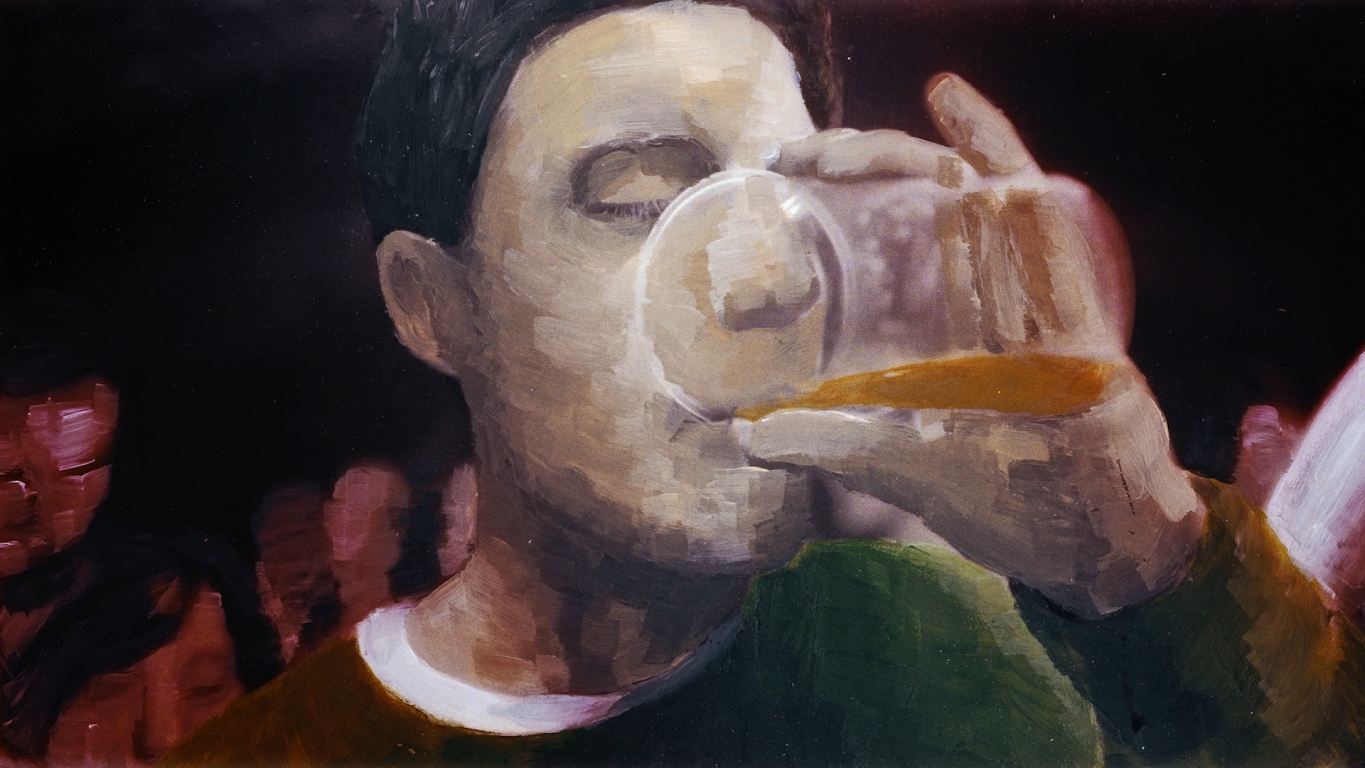
dir: Diana Cam Van Nguyen
Czech republic, 2018, 9 min 52 sec
Technique:
School: FAMU Praha
Jury statement:
A very heavy subject treated with a gentle touch.
International Competition of Abstract and Non-narrative Animation
Jury: Tomek Ducki, Annegret Richter, Max Hattler
Half Asleep
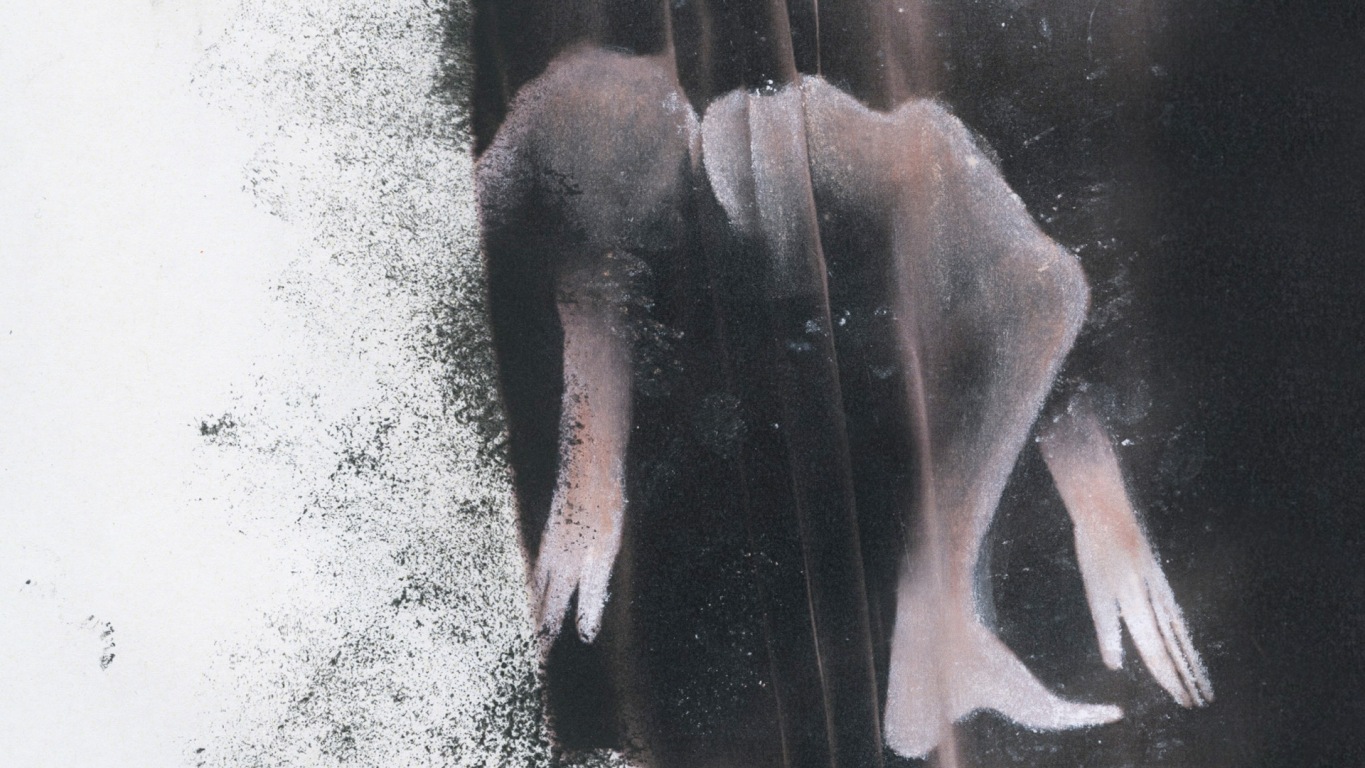
dir: Caibei Cai
GB, 2018, 5 min 16 sec
Technique:
Producer: Royal College of Art
jury statement:
An experimental yet surprisingly sensual film, which is using surreal visual elements, layered symbolism and a carefully choreographed motion in a poetic way, to grasp a feeling between pleasure and pain, dream and reality, and makes you wonder about other body parts which are not present in the picture.
Special Mention of Jury
Don’t Know What
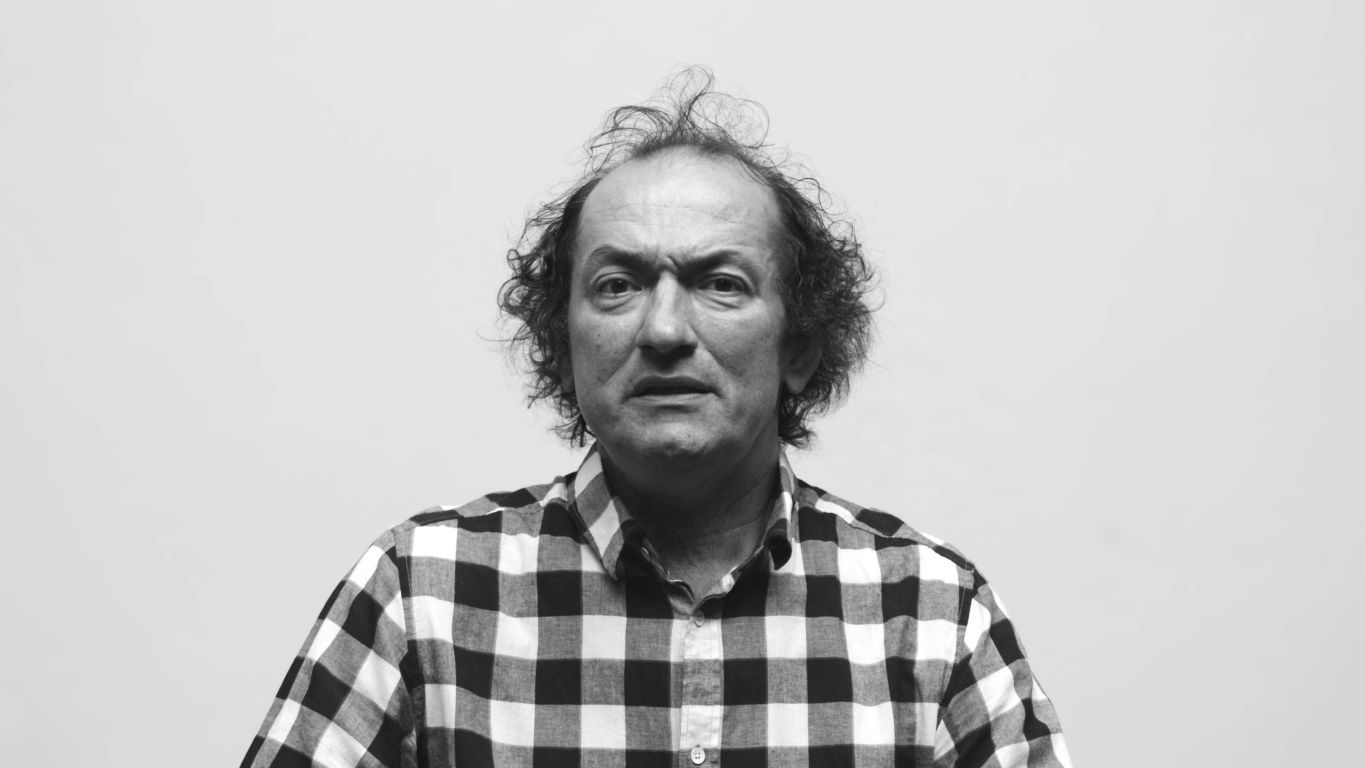
dir: Thomas Renoldner
Austria, 2018, 8 min 7 sec
Technique:
Producer: Thomas Renoldner
jury statement:
The special mention in the abstract and non - narrative animation category goes to a film which dares the unthinkable, and pulls it off to surprising effect: The marriage of high-brow and humour, form and farce, amusement and avant-garde.
International Competition of Music Video
Jury: Tomek Ducki, Annegret Richter, Max Hattler
Seth Schwarz & Be Svendsen: Elves of Karoo
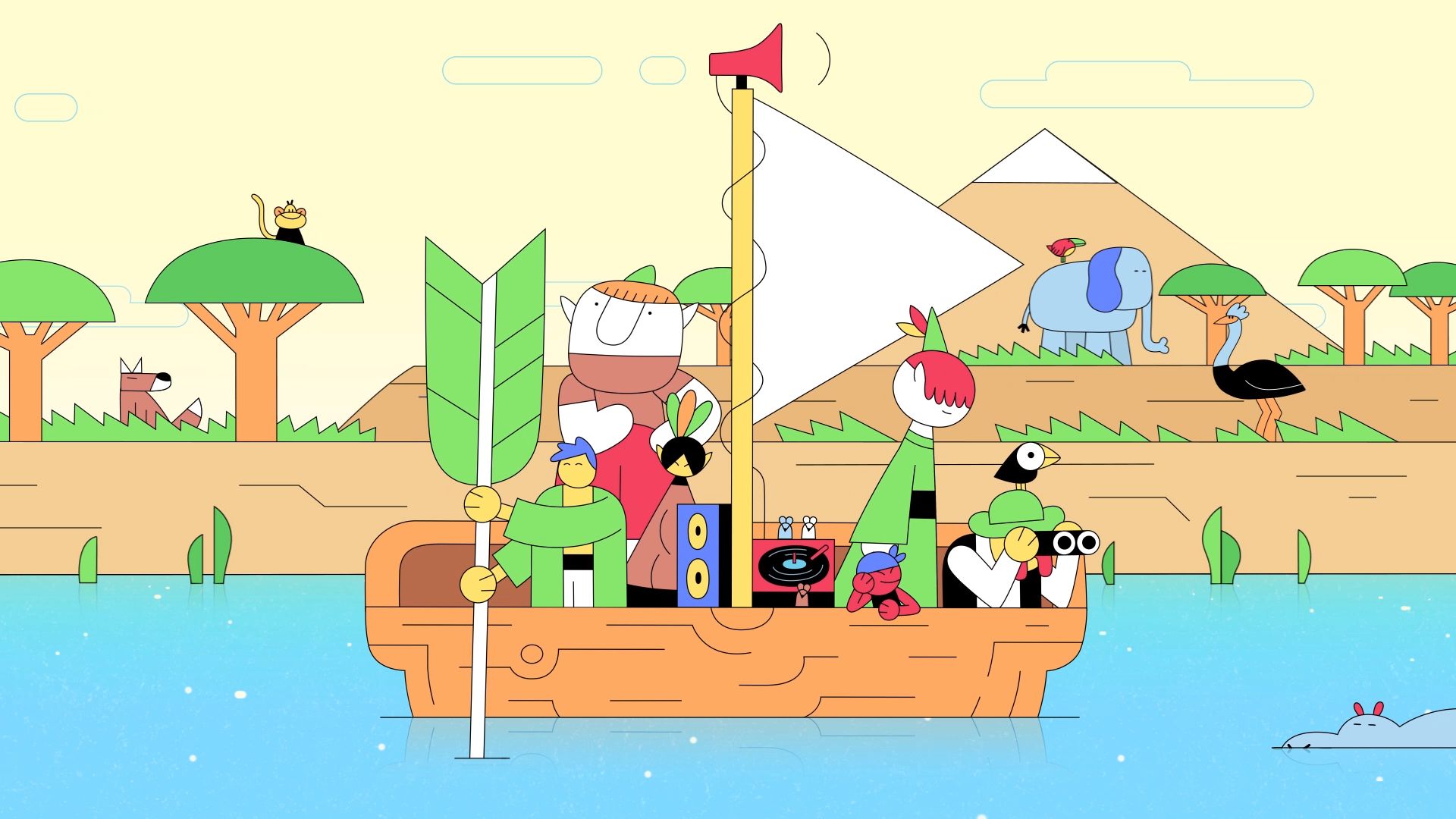
dir: Yves Paradis
Germany, 2018, 6 min 32 sec
Technique: 2D
Producer: Seth Schwarz
jury statement:
Like many in the audience, we were seduced by the simple but music driven animation, that took advantage of the minimalistic sound and turned it into a very entertaining excursion for all of us. In that way, the film also comments on the power of electronic dance music that can easily connect people from different worlds and different backgrounds. We felt like going to a rave, with everyone dancing to the same beat. This is achieved through consistent character design and perfect timing of the animation to the music.
Special Mention of Jury
Siamés: Mr. Fear
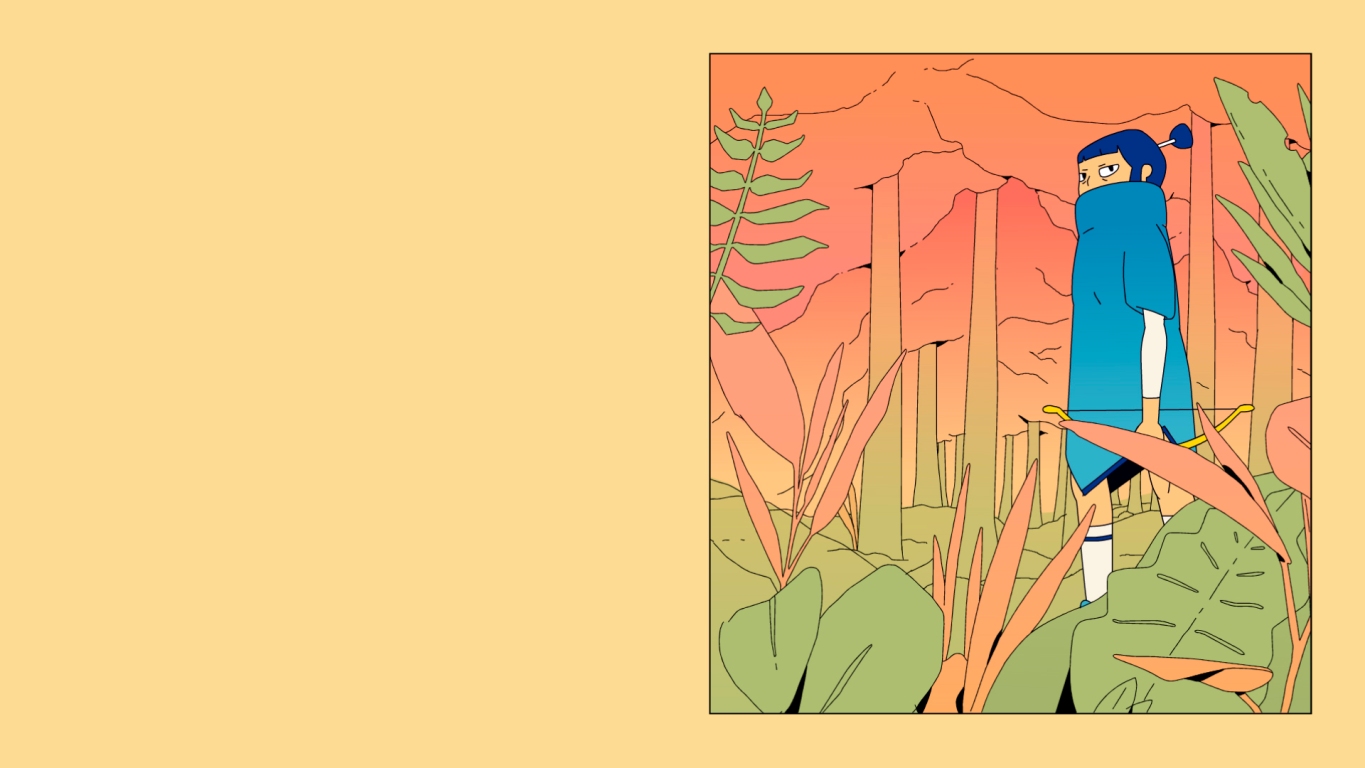
dir: Ezequiel Torres, Pablo Rafael Roldán
Argentina, 2019, 4 min 33 sec
Technique: 2D
Producer: Rudo Company
jury statement:
The special mention in the music video category goes to a solid, action-driven animation which manages to combine a strong and clear narrative with a cool visual aesthetic in symbiosis with the music.
International Competition of Independent Computer Games
Jury: Tereza Krobová, Jaromír Plachý, Adriaan de Jongh
Best Artwork
Homo Machina
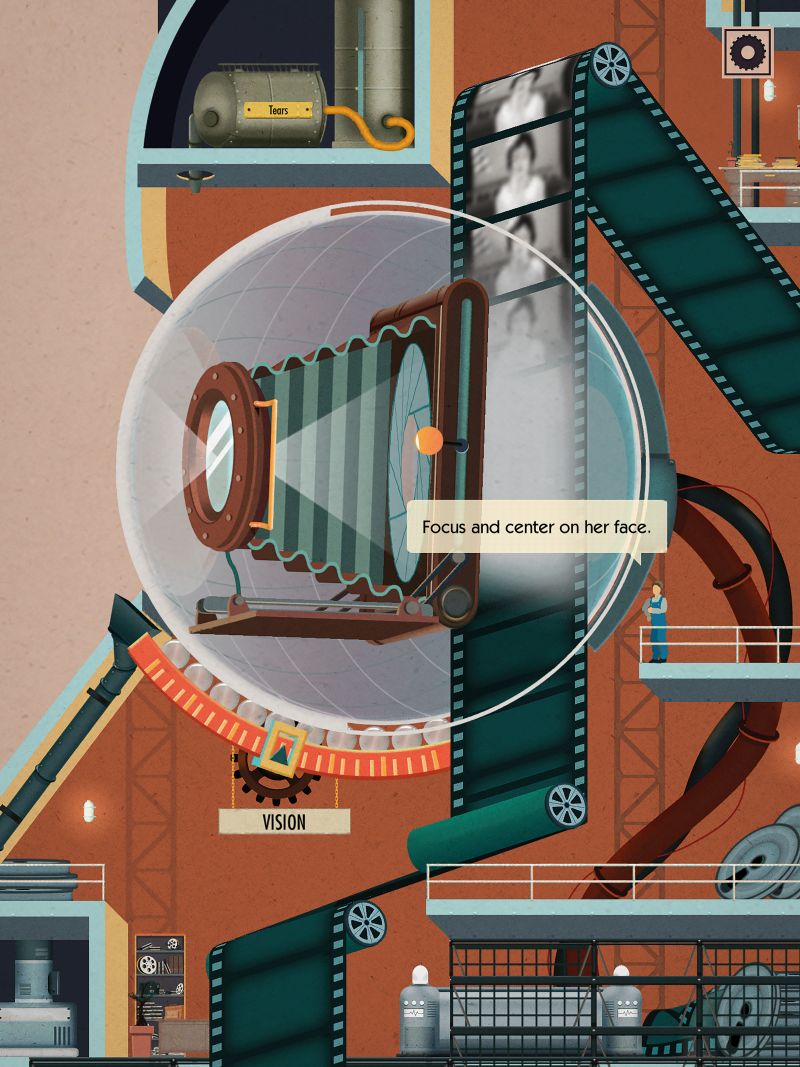
Marc Lustigman, Noam Roubah
France, Germany, 2018
Jury statement:
An innovative and original design that seems to be floating on a puff of vapour straight from the Industrial Revolution, Fritz Kahn’s transcendence and tongue-in-cheek mechanical and electric dada. The award goes to the game for a cute materialization of natural human processes and return to a child-like belief that our passive bodies are controlled by thousands of tiny men.
Best game for children
Donut County
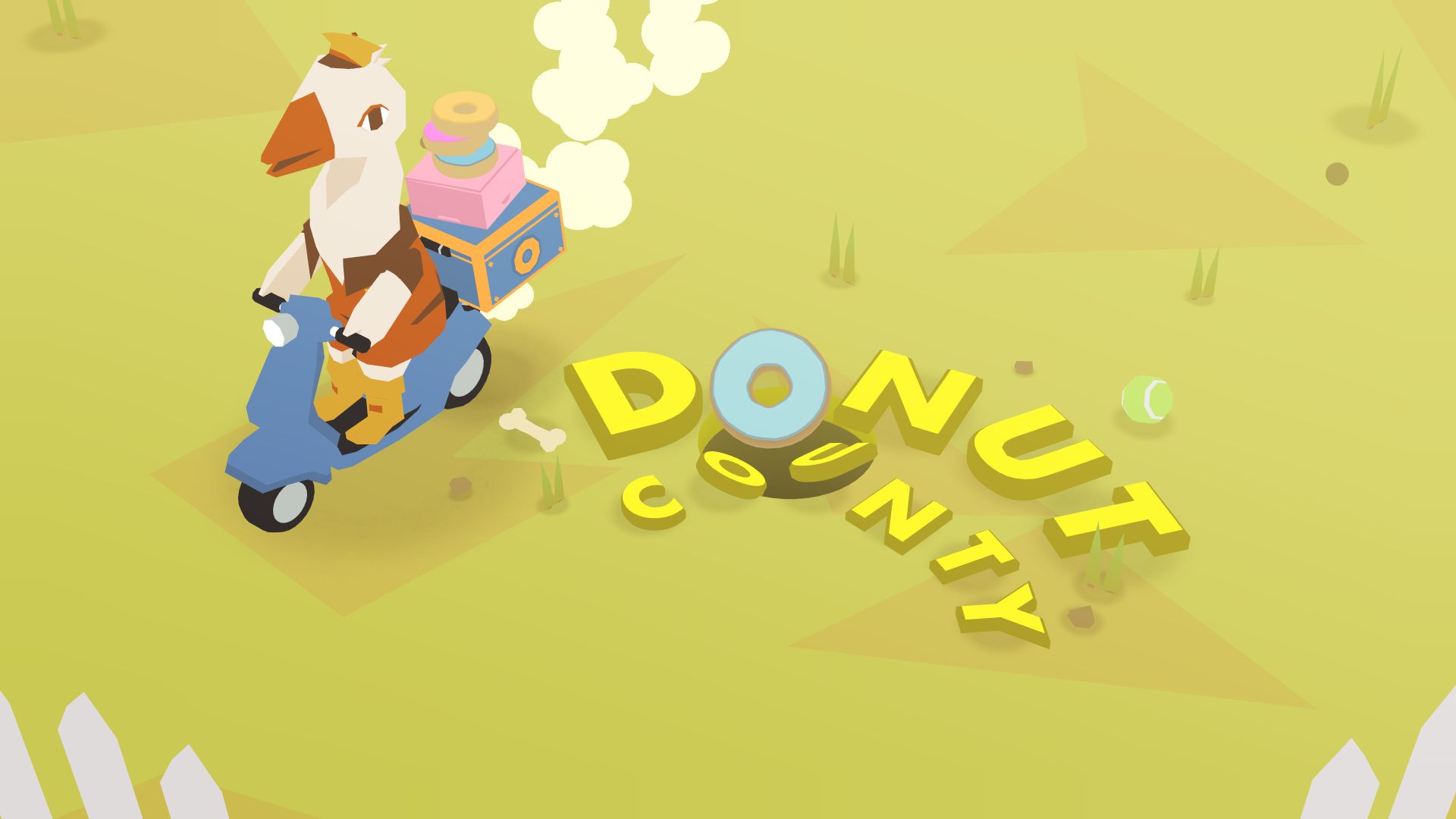
Ben Esposito, USA, 2018
Jury statement:
A hole that sucks up all the people and objects in the world, which are then piled up underground and where everyone just continues living? Donut County inspires a child-like imagination unlike most other games. It is juicy and satisfying in gameplay and feedback, it reeks of a digital-age-kids-vibe, and it's easy to play. The playful gameplay along with its playful story make it a clear winner of the Anifilm Game for Children award.
Czech Horizon
Best Czech Short Fiilm
KDESI / CEVA
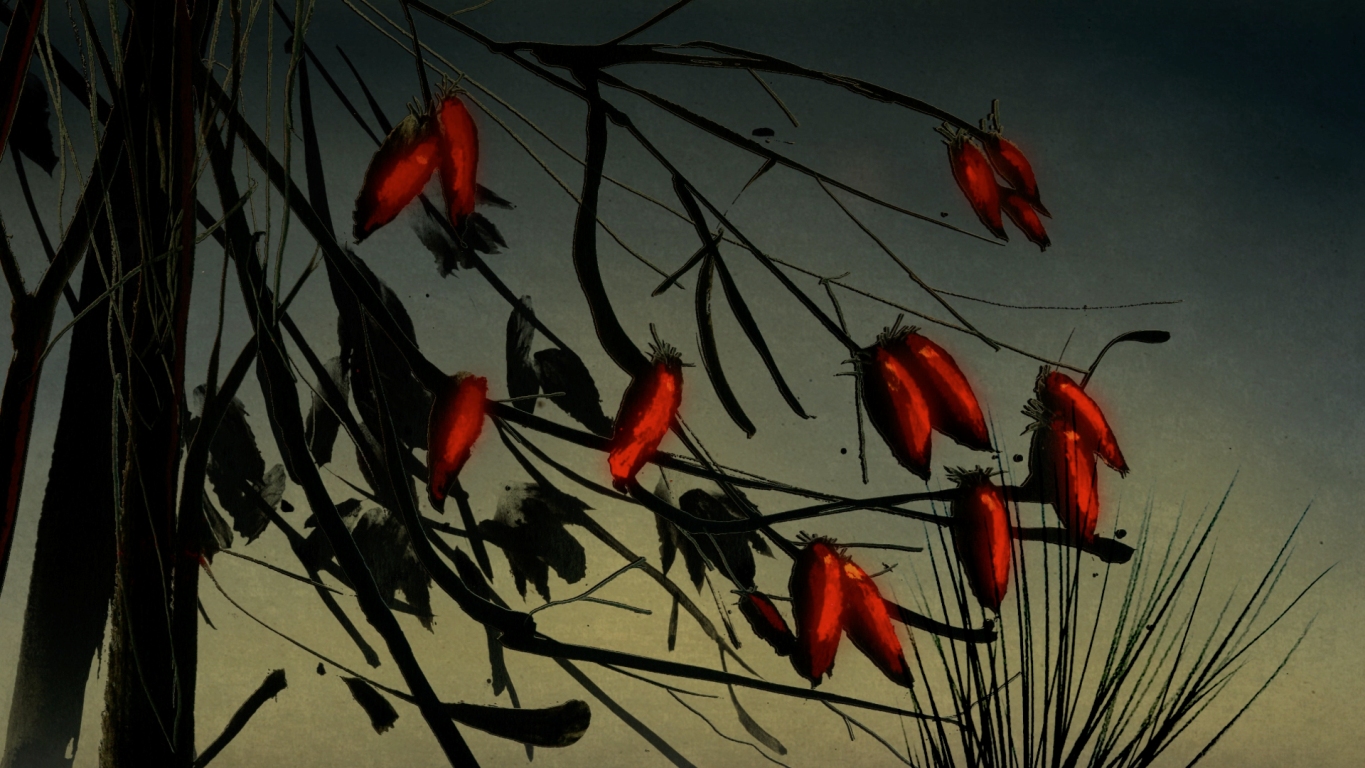
dir: Paul Muresan
Romania, Czech Republic, 2018, 8 min 45 sec
Producer: Safe Frame, Maur film
Best Czech Student Film
Schovka
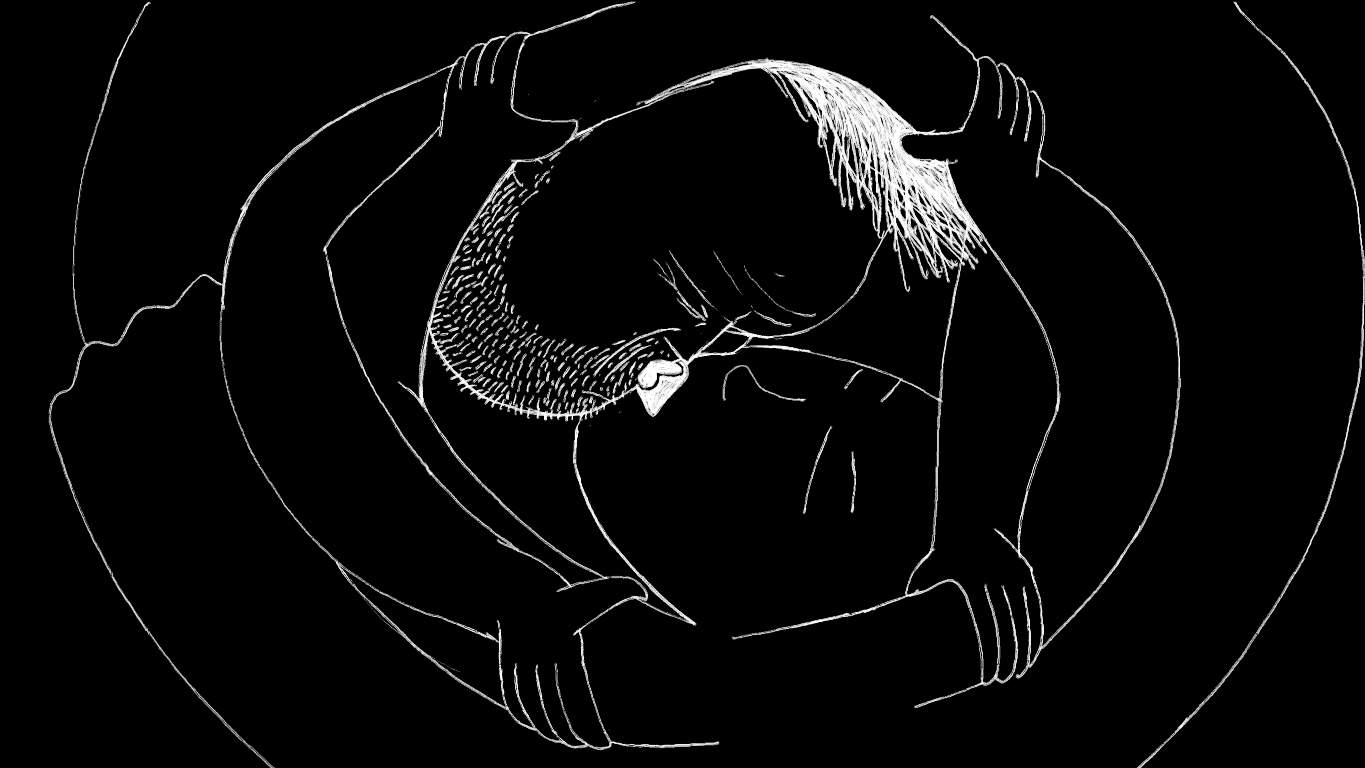
dir: Barbora Halířová
Czech Republic, 2019, 6 min 56 sec
School: FAMU Prague
Best Czech TV/on-line Film and Series
Zpívejte s námi – Vánoční speciál
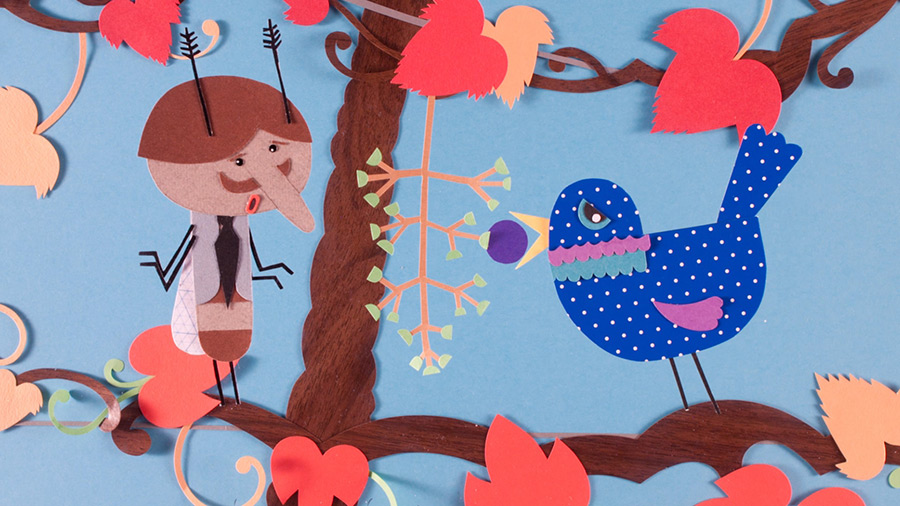
dir: David Súkup
Czech Republic, 2018, 5 min
Producer: Česká televize
Best Czech Commissioned Work
Jak to snáší?
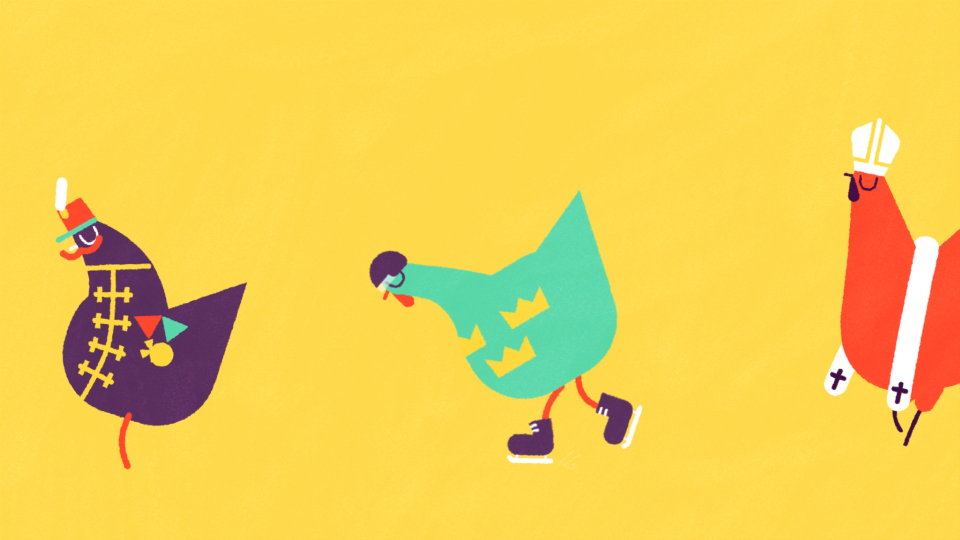
dir: Filip Veselý
Czech Republic, 2018, 1 min 39 sec
Producer: Krutart
Best Czech Music Video
Shabazz Palaces: Gorgeous Sleeper Cell
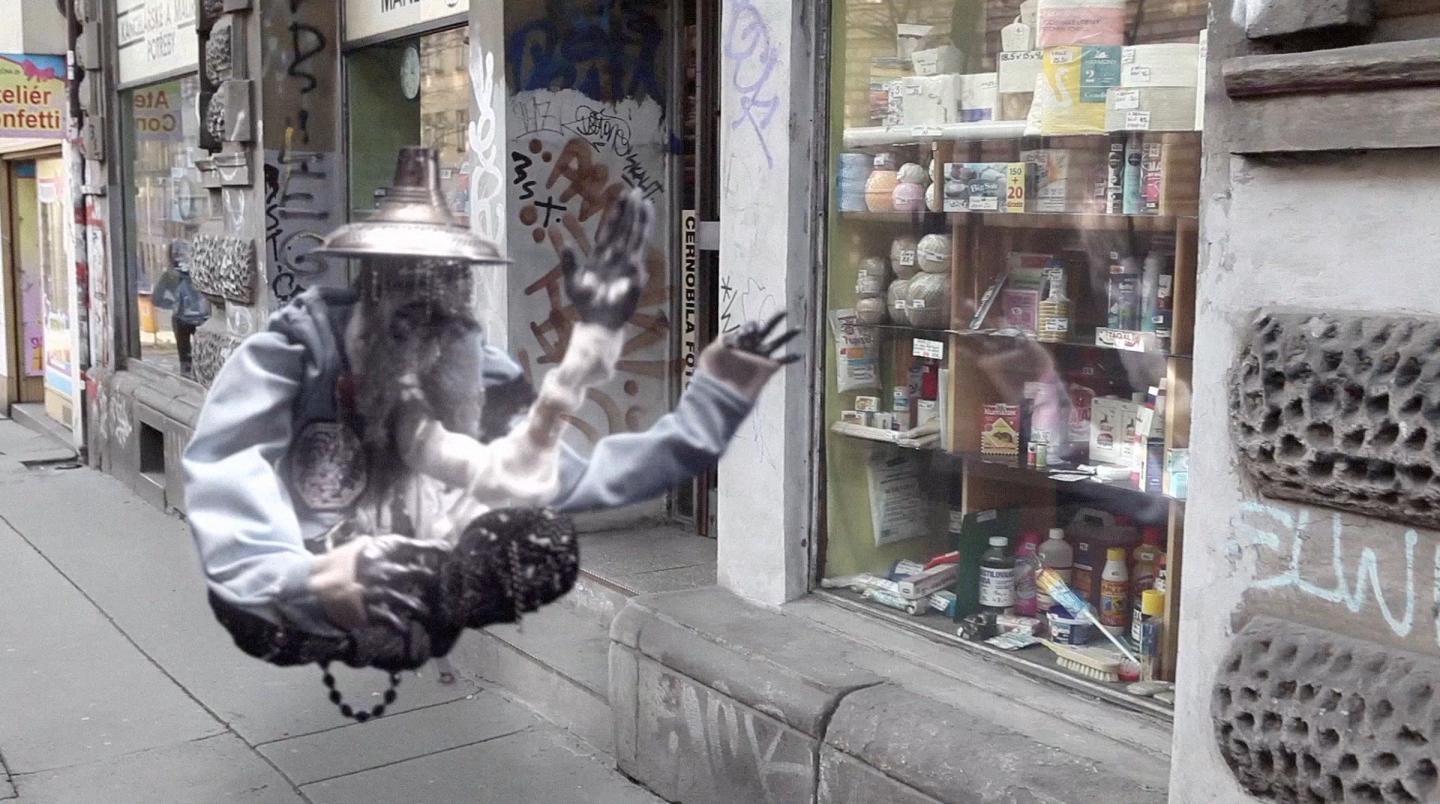
dir: Mikuláš Suchý, Vojtěch Kočí
Czech Republic, 2018, 2 min 24 sec
Producer: UMPRUM












